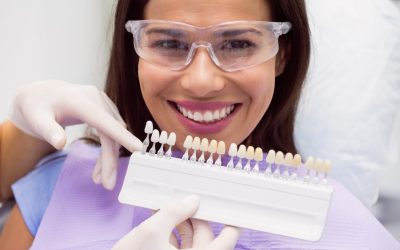Imagine, after months or even years of braces, your teeth are beautifully aligned, giving you the smile you’ve always dreamt of. Your braces have finally come off, and it’s time for retainers. But as time passes, you may become tempted to ignore or skip wearing them altogether as time goes on; after all, now they look good, so why bother wearing retainers anymore? But that would be wrong: retainers must remain part of your daily regimen even when your smile looks excellent if they want it! Retainers are an essential element of orthodontic treatment, and their significance goes well beyond the initial treatment phase. In this comprehensive guide, we explore why retainers are necessary, how replacing retainers how frequently they should be replaced, and more.
Replacing a dental retainer is like giving your smile a fresh start—a chance to keep your teeth aligned and your confidence shining bright.
Retainers Role in Orthodontic Treatment
To appreciate the importance of retainers, it’s crucial to comprehend their role in orthodontic treatment. Once braces or other devices have shifted your teeth into their desired positions, retainers step in to maintain this alignment. Here’s why they matter:
Prevent Relapse:
Your teeth have their memory and will tend to return to their original positions over time. Retainers provide a buffer, keeping your teeth in their places and helping prevent relapse.
Stabilizing Your Bite:
Retainers keep your teeth in alignment and help secure your bite by ensuring that both upper and lower teeth fit together correctly.
Allow for Tissue Adaptation:
Retainers give tissues and ligaments time to adapt to your new tooth positions. They provide them with the adjustment period required.
Post-Treatment Maintenance:
Retainers play a vital role in protecting the results achieved from orthodontic treatment, particularly within the first year after removing braces.
How long does it take to get a retainer?
It varies with the type and your orthodontic practice’s scheduling. Most retainers can typically be made within days to two weeks after your orthodontist takes impressions or scans of your teeth and sends them off to a dental lab, which custom-makes them. Some offices even have in-house labs, which may speed up this process further. Once it’s ready, an appointment will be set up. Hence, it fits correctly – overall, the entire process usually lasts one to three weeks before receiving it, from impressions to receiving your retainer. Therefore, know your condition and get treatments accordingly for the best results.
Tips for Maintaining Retainers
Proper care and maintenance of retainers are vital to prolonging their helpful lifespan and ensuring they continue doing their job effectively. Here are a few pointers:
Clean Retainers Regularly:
Like teeth, retainers require routine cleaning with soft brushes and non-abrasive toothpaste to maintain optimal shape and retention. Hot water could warp or disfigure its structure if used to rinse, so use cool or room-temperature water instead.
Take Care when Removing Retainers:
Be mindful when taking off your retainers to avoid damaging them by biting down on or fiddling with them with your tongue. Do not force or bite down.
Safe Storage of Retainers:
Store retainers safely in their protective case when not in use. Take caution in hot environments like cars, as high temperatures could warp or damage them.
Keep Retainers Out of Reach of Pets:
Pets have an affinity for retainers. Keep them out of their reach to avoid any chewing accidents!
Keep Appointments With Orthodontist:
As recommended, schedule regular follow-up visits with your orthodontist so they can assess the condition of your retainers and ensure your teeth stay aligned.
Costs Associated with Replacing Retainers
Replacement retainer costs depend on several variables, including:
Type of Retainer:
There are different kinds of retainers, including removable and fixed (bonded ). Removable retainers tend to be cheaper to replace than fixed retainers.
Materials:
Another thing associated with replacement invisalign retainer cost. The materials used to craft retainers can have an impactful impact on their cost. For instance, clear aligner-style retainers may cost more than traditional wire and acrylic ones.
Insurance Coverage:
Before replacing retainer, consult your dental insurance policy, as some plans may cover its replacement if deemed medically necessary.
Orthodontist’s Fees:
When considering the total cost, fees charged by an orthodontist for evaluation, adjustments, and replacement will have an impactful influence.
How long do orthodontists keep retainer molds?
Orthodontists typically keep retainer molds for 1 to 3 years after treatment to allow time for any adjustments or replacements required during this critical post-treatment phase, when teeth can shift most easily. After this initial period, orthodontists may discard molds as the patient’s bite and alignment stabilize further. However, some practices may keep hold of molds for record-keeping purposes if another retainer may be needed or if concerns arise about dental alignment later.
Conclusion
Retainers are essential in maintaining the results of your orthodontic journey and creating a lifetime of straight teeth and beautiful smiles. Understanding when and why to replace them can ensure maximum oral health benefits and protect any investments in your smile.
Remind yourself that your orthodontist is on this journey with you. Regular appointments and open communication with them will make it easier for you to assess the condition of your retainers and promptly address any concerns by taking proper care in replacing and taking proper precautions with their use as needed. However, if you are considering how to get new retainers or face any problem in replacing retainer, connect with Dr. Savita, your ideal dentist, to help. Visit her now!




